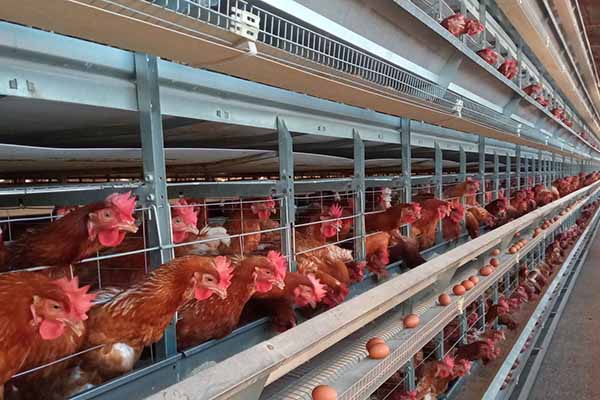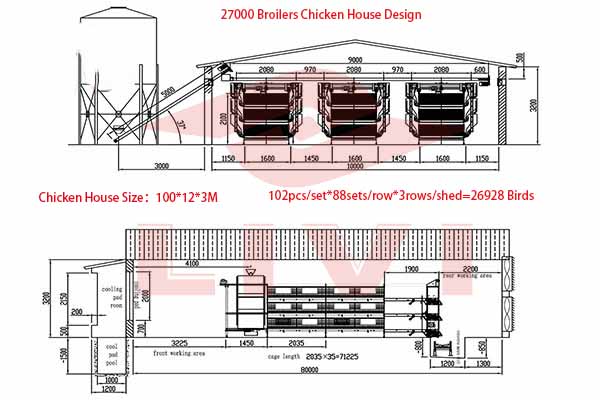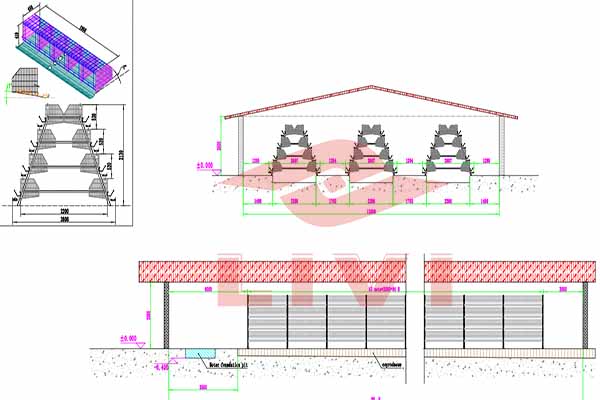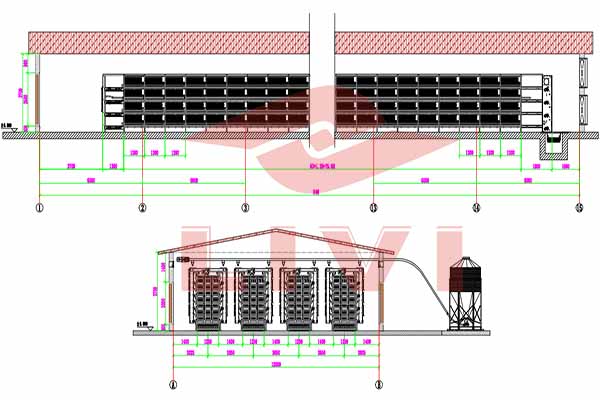How to Raise 30,000 Broilers with Automation in Zimbabwe
Introduction
Automating the broiler farming process in Zimbabwe can significantly increase efficiency and yield. This article will guide you through the steps to raise 30,000 broilers with automation, ensuring a profitable and sustainable operation.
Step 1: Planning and Budgeting
Before embarking on an automated broiler farming project, it’s crucial to have a well-thought-out plan and budget. Here’s a breakdown of the initial considerations:
– Land and Facilities: Calculate the amount of space required for your broiler farm. A general rule is 1 square meter per bird.
– Initial Investment: Estimate the cost of purchasing broilers, feed, automation equipment, and labor.
– Operating Costs: Consider ongoing expenses such as electricity, feed, and maintenance.
Step 2: Choosing the Right Automation Equipment
Selecting the right automation equipment is key to successful broiler farming. Here are some essential tools:
– Automated Feeding Systems: These systems ensure consistent feeding, which is vital for broiler growth.
– Watering Systems: Automated watering systems maintain proper hydration without the need for constant supervision.
– Ventilation and Climate Control: Automated systems can adjust the environment to optimize growth and reduce stress.
– Monitoring and Control Systems: Use technology to monitor the health and growth of your broilers, and make adjustments as needed.
Step 3: Training and Staffing
Staff training is essential to ensure the smooth operation of your automated farm. Consider the following:
– Recruitment: Hire experienced staff who understand the automation process.
– Training: Provide comprehensive training on how to operate and maintain the automated systems.
– Supervision: Assign a supervisor to oversee the operation and ensure everything is running efficiently.
Step 4: Feed Management
Feed is a significant cost in broiler farming. Here’s how to optimize it:
– Nutritional Requirements: Understand the nutritional needs of your broilers at each stage of growth.
– Quality Control: Ensure the feed is of high quality and free from contaminants.
– Inventory Management: Keep track of feed usage and reorder as needed to avoid waste.
Step 5: Monitoring and Quality Assurance
Regular monitoring and quality assurance are vital to maintain the health and productivity of your broilers:
– Health Monitoring: Regularly check for signs of disease and address them promptly.
– Performance Tracking: Use data analytics to track the growth and performance of your broilers.
– Environmental Monitoring: Ensure the environment is conducive to broiler growth and maintain hygiene standards.
Conclusion
Raising 30,000 broilers with automation in Zimbabwe requires careful planning, the right equipment, and efficient management. By following these steps, you can create a profitable and sustainable broiler farming operation.
For more information or to receive a free chicken farming design plan and equipment quote from LIVI Machinery, please feel free to leave a comment below or contact us directly.





